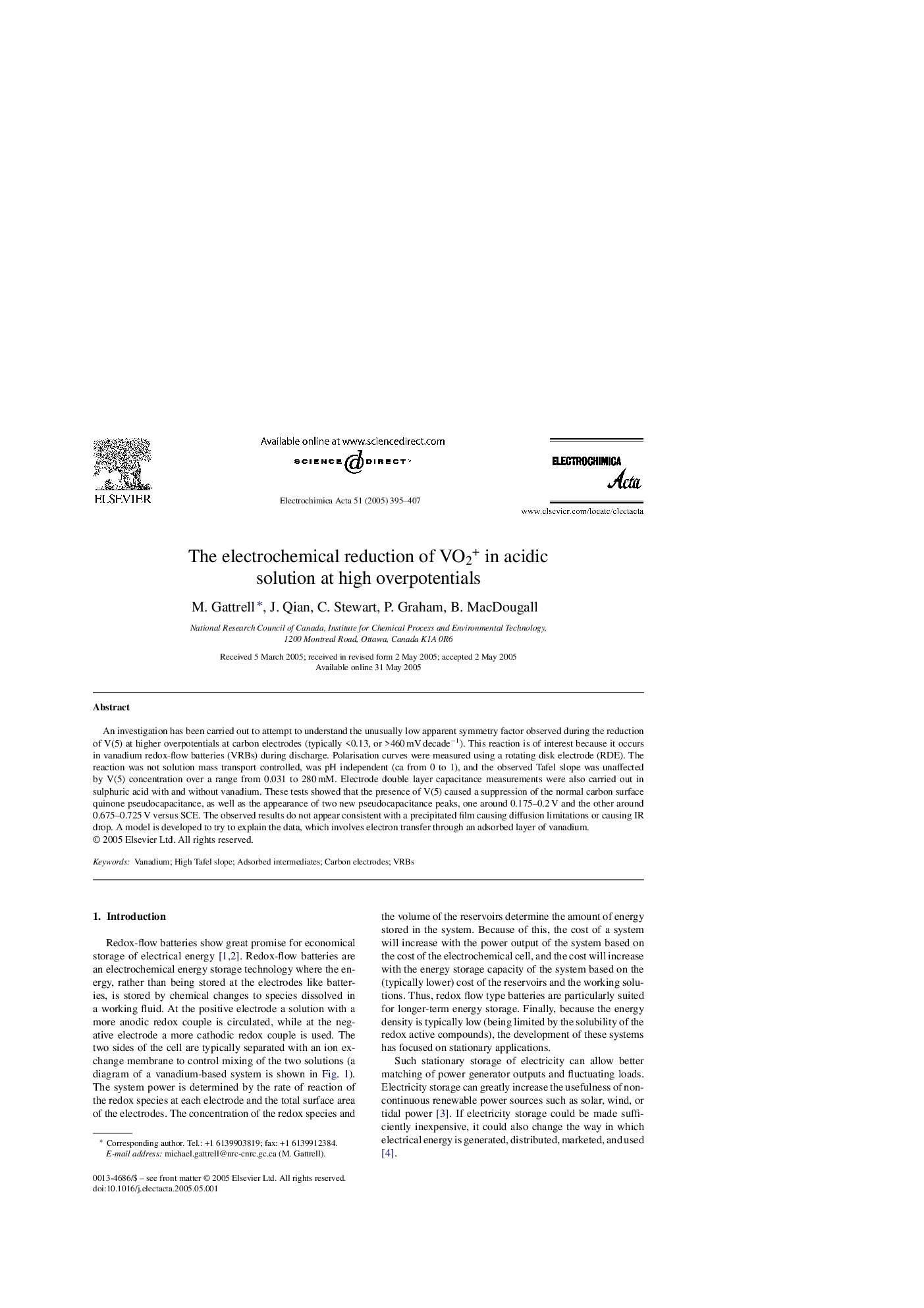| Article ID | Journal | Published Year | Pages | File Type |
|---|---|---|---|---|
| 10269472 | Electrochimica Acta | 2005 | 13 Pages |
Abstract
An investigation has been carried out to attempt to understand the unusually low apparent symmetry factor observed during the reduction of V(5) at higher overpotentials at carbon electrodes (typically <0.13, or >460Â mVÂ decadeâ1). This reaction is of interest because it occurs in vanadium redox-flow batteries (VRBs) during discharge. Polarisation curves were measured using a rotating disk electrode (RDE). The reaction was not solution mass transport controlled, was pH independent (ca from 0 to 1), and the observed Tafel slope was unaffected by V(5) concentration over a range from 0.031 to 280Â mM. Electrode double layer capacitance measurements were also carried out in sulphuric acid with and without vanadium. These tests showed that the presence of V(5) caused a suppression of the normal carbon surface quinone pseudocapacitance, as well as the appearance of two new pseudocapacitance peaks, one around 0.175-0.2Â V and the other around 0.675-0.725Â V versus SCE. The observed results do not appear consistent with a precipitated film causing diffusion limitations or causing IR drop. A model is developed to try to explain the data, which involves electron transfer through an adsorbed layer of vanadium.
Related Topics
Physical Sciences and Engineering
Chemical Engineering
Chemical Engineering (General)
Authors
M. Gattrell, J. Qian, C. Stewart, P. Graham, B. MacDougall,
